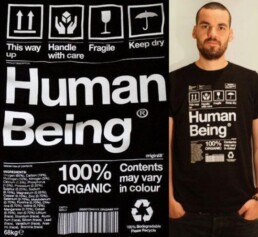Don't Tuck in Your Labels
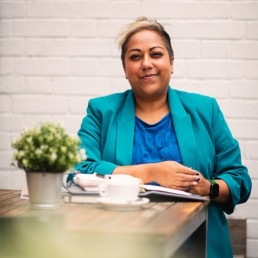
Written by Bennie Kara
Co-Founder of Diverse Educators
Written January 7, 2018.
I am the woman that always has a clothes label sticking out somewhere. In any given day, some kindly person will reach behind me and tuck it in. And I, without fail, will apologise for that label and the fact that someone had to decide what to do with me.
You see, clothes labels are really useful things. They tell you what to do with the item. How to take care of it – how to fix the item if it is damaged in some way. It stays there as a reminder that the item needs to be nurtured. Lots of us become irritated by them – how many times have we cut the label out because we can’t forget it is there – perhaps it’s rubbing against our skin, making us feel uncomfortable. I do it all the time with the vain hope that people will not have to fix me up and make me presentable.
I have made many jokes over the years at various conference about winning the competition on how many labels I have. We categorise people in so many different ways and I have seen it as a laughing matter. So when I was thinking about my labels, I decided to create a pie chart of the make up of me. Mostly just in case my Maths teacher is watching – my Maths GCSE started with 30 mins of me panicking because I had forgotten how to draw a pie chart.
So if you want to see what my clothes label says – this is me.
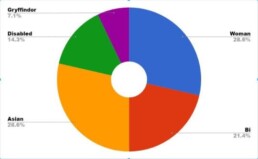
It took a long time to decide how much of me I could allocate to the different labels. I am a woman. Quite considerably so, according the number here. I am also equally Asian. It gets harder when I have to decide just how much of me is on the LBGT spectrum. I define as bisexual and have been in a relationship with a woman for a long time. All of these categories I have become comfortable with – while I know they present me with challenges, I have spent my life getting to know them.
I have come to know myself as a Gryffindor too. This is not in jest. I will not have anyone disagree. I’ve taken the test.
It is my last label that is more recent and perhaps the one I struggle with the most. I learned not long ago that I have hearing loss in both ears and it is more pronounced in my left ear. I will be wearing a hearing aid soon to help me function in loud spaces, to help me understand what people are saying when I can’t see their faces.
I mean, I know I’m a woman and can’t lift heavy things or be in charge of a boardroom. I know that I am Asian and therefore should probably be teaching Science and not English. I know that I am bisexual and this means I am greedy/just not willing to admit I am gay.
But I was not prepared to be disabled, albeit in a small way. In some ways I have to confront here my own misgivings about having a hearing impairment in a profession that is built on listening to children in order to teach them. I sat in a car park and cried. Because this female, Asian, bi person didn’t want another label – especially one that could literally mean people think I cannot do my job. How many glass ceilings for me?
It has taken time to adjust to it. It chafed. I could feel it rubbing. But I have left it there because it gives people another way to know me.
Some people will say: if we take away all labels, we can just be people. I absolutely agree. I want to be able to teach without any of those. At the risk of sounding like a below the line Daily Mail commentator, stop going on about your labels – it creates the victim complex. It’s not important to the way you teach, so just shut up and get on with it. Identity politics creates resentment. I resent you and your labels.
I don’t think any of us walk around with our labels on our sleeves. If teaching is a profession in which your authentic self is required for children and adults alike to connect and know you, if it a profession in which people are the centre then I do not want to lie, either overtly or by omission.
The average 18-44 year old lies twice a day. I am sure that you are sitting there thinking – well that’s low. I can smash that statistic by 9am in the morning on any given school day. But the lies I tell because I have to are now starting to grate.
There are things I can’t say, choose not to say, places I won’t ever visit with my partner – and it is exhausting making all of those decisions about who I can be when I am simultaneously juggling the demands of the curriculum, behaviour, marking, meetings, paperwork. Wouldn’t it just be easier for me and more real for the students if I didn’t have to think about my pronouns so carefully? Or worry about who is going to see me with my partner in the local area?
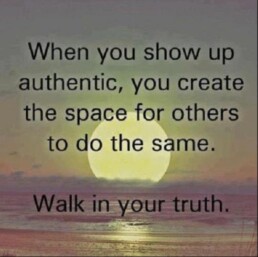
I spoke recently about the curriculum and how having diverse voices delivering content doesn’t take away from what we teach our students – when we teach the Ramayana or about Malian women’s contributions to local industry, we are not saying do not teach about Wordsworth or Dickens. Perhaps as a female, Asian, bisexual, disabled Gryffindor, I can enrich rather than detract. Hiring me, allowing me to be free within a role, means a better education. Not because I am better. But because I can bring my knowledge and still teach yours really quite well. There is enough oxygen for all of our stories, told with pride. Authenticity in teachers allows students to understand humanity in all of its guises. We actively prevent learning when we lie, when we omit.
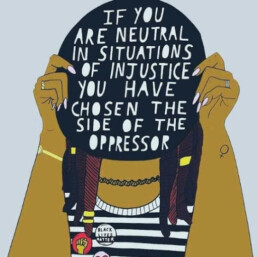
I have seen this quotation many times and it occurs to me that I no longer see it as being about other people. I see it as being about myself and about all of us that walk in different shoes. My silence about about me is collusion. I am colluding with the oppressor. It is unjust that I should be quiet, tuck in my labels to make everyone else feel comfortable, staff, students, parents alike. In remaining silent and not celebrating or sharing all of me as I am, I am complicit.
How can any of these things happen when we are silent?
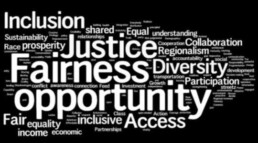
I am not asking anyone to stand up and shout from the rooftops about their sexuality, disability, gender or heritage. But I am asking you to stand, metaphorically speaking. And speak about your truths without fear. And perhaps, when you feel brave enough because you have a room full of people willing to support you – to act, in the way that makes you feel that you are authentic.
So, if you see me again and my labels are sticking out. Maybe don’t tuck them in.
Closing keynote: Diverse Educators Conference, 6th January 2018
